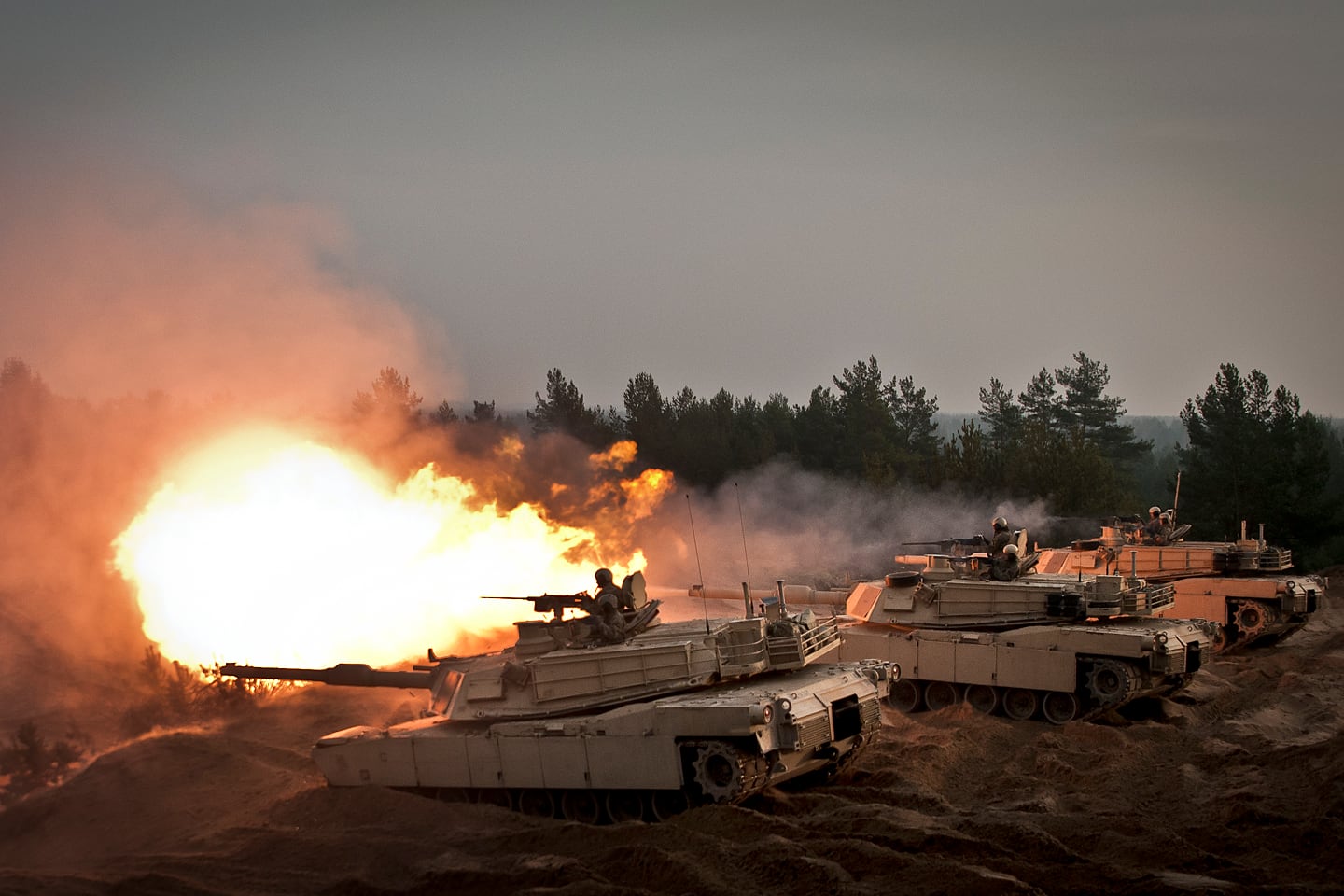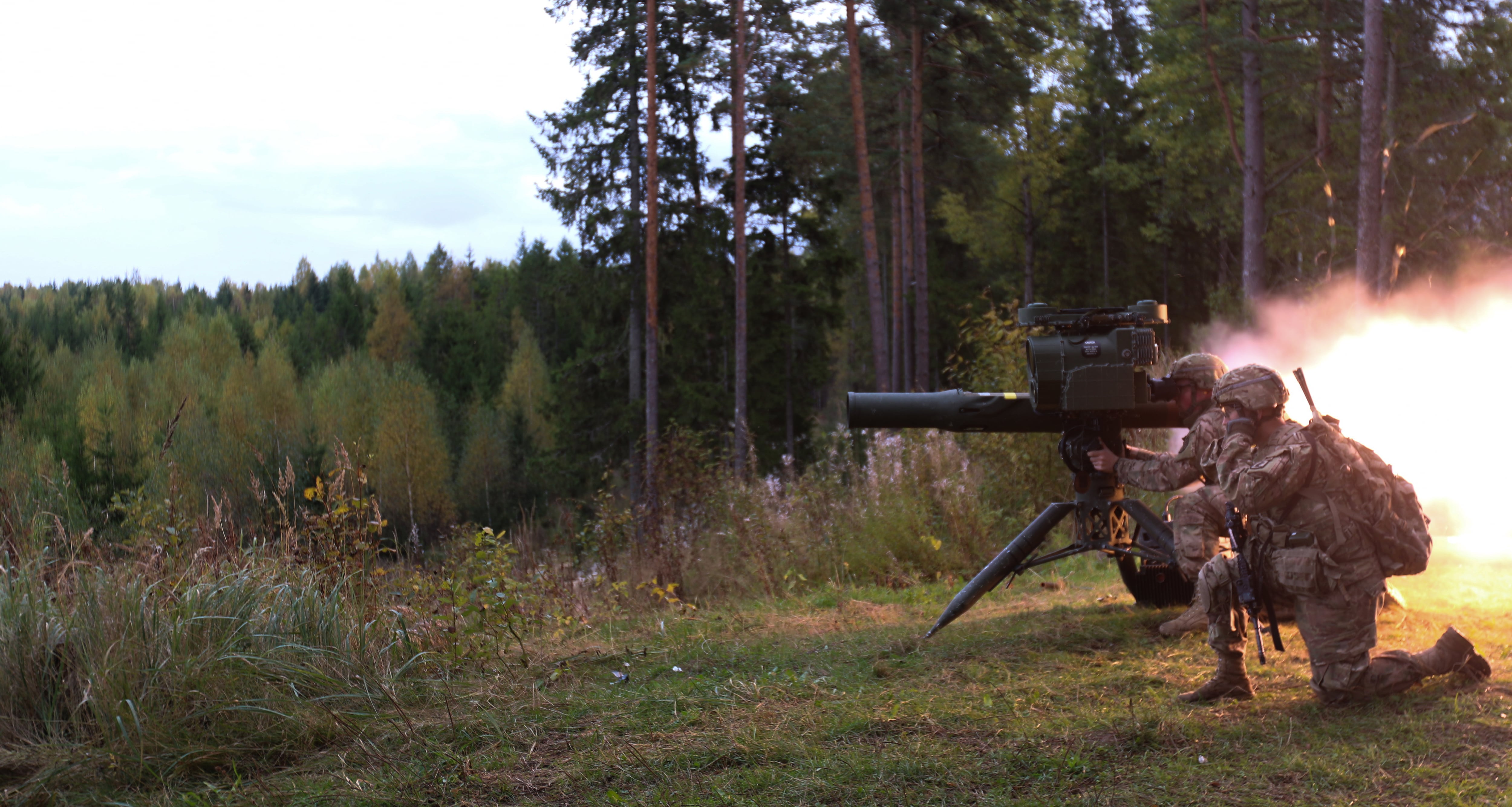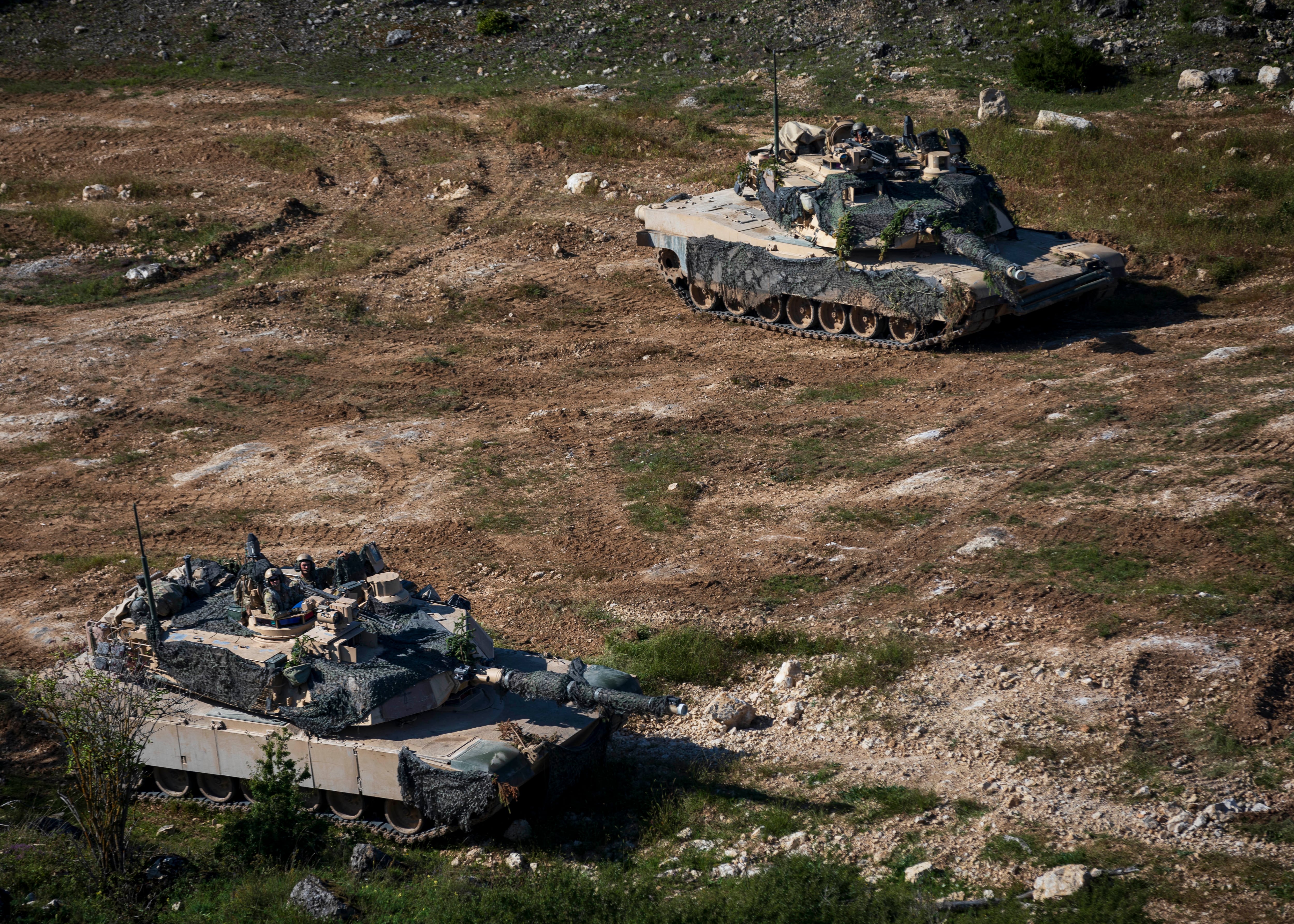The U.S. Army will test new active protection systems on M1 Abrams tanks during Defender Europe 2020 this spring, as well as send the service’s first set of the new missile and rocket countermeasures to outfit an armored brigade on the continent.
Made by Israeli manufacturers, Trophy active protection kits use sensors to knock down incoming rocket-propelled grenades and anti-tank guided missiles, or ATGMs, shot by roving enemy troops.
Tanks aren’t permanently affixed with Trophy kits, however, and that’s part of what soldiers will practice for during Defender 2020, according to Army Europe commander Lt. Gen. Christopher G. Cavoli.
Because of the 2.5-ton weight of the kits, as well as their self-contained munitions, they’re stored separately from tanks. But brackets have to be welded to the vehicle so a kit can even be equipped when needed.
“What we’re going to do for Defender 2020 is practice that at the company level. We’re going to equip one company,” Cavoli said at the Pentagon on Monday. “It’s the first time the U.S. Army is going to take an organic unit, a real live combat unit, and say ‘here’s your Trophy stuff, here’s your supporting welders, get to work and mount it.’”
The need for these systems is driven by real-world observations.
Russian 9M133 Kornets, American BGM-71 TOWs, Chinese Red Arrows, and Iranian Toophans are a staple of modern Middle East conflicts, as evidenced by videos across the internet of them destroying Syrian Army T-72 main battle tanks, among other vehicles.
Meanwhile, Israeli armor crews reported safely intercepting a range of projectiles with their Trophy systems during the 2014 Gaza Strip conflict.
RELATED

“We have seen a proliferation of ATGMs — high-quality ATGMs like the Kornet advanced models — throughout the world,” Cavoli said. “Those can’t be defeated without active protection systems, a combination of reactive tile armor and active shoot-down systems."
Trophy kits have computer processors that detect, classify and track incoming rounds. Israeli firms producing the equipment advertise that Trophy kits can also locate the source of an incoming shot, allowing for counter-fire if the anti-tank shooters haven’t scurried off.
Soldiers using the new Trophy systems during Defender 2020 will draw from prepositioned stock already in Europe.
To put the kits on, ballast and additional armor first has to be welded onto the tank, making a roughly 65-ton Abrams about 5,000 pounds heavier.
Radars, sensors and explosive devices that counter incoming rounds are mounted as well. In order to put on the heavier equipment, a tank also needs adjustments to its turret.
During 2017 tests, crews noticed some turret imbalance problems from the additional weight, according to a Pentagon report that year.

Gen. Gustave F. Perna, who helms Army Materiel Command, will take the lead on studying the deployment of the Trophy system so the service can better understand what the process actually entails.
Trophy kits have also been tested on Stryker personnel carriers and Bradley fighting vehicles, as the service works to upgrade its armor formations to counter peer adversaries.
During 2018 congressional testimony, then-Army Chief of Staff Gen. Mark A. Milley spoke with lawmakers about concerns that the United States was behind Russia in the development of active protection systems.
He also stressed that Abrams and Bradleys are due for retirement, dating back to when he was commissioned as a second lieutenant.
“They have served the nation extraordinarily well, but they are fundamentally at the end of their lifespan,” Milley said in April 2018. “We’ll probably get, max, another ten maybe 15 years out of these vehicles. We have maxed out their weight, the technological upgrades that we can do. So, hence, the modernization program of a next generation combat vehicle.”
“We are aggressively upgrading Abrams and Bradley and Stryker in all of our formations throughout the Army," he added. "And I’m very confident that those weapon systems will continue to serve us well, even against a Russia or China in the near term.”
The Pentagon plans to outfit four brigades with the Trophy system under contracts valued at roughly $200 million.
“The first set of Trophy is going to be delivered [and] stored in Europe,” Cavoli said, noting that one set is designed to outfit one armored brigade combat team.
Kyle Rempfer was an editor and reporter who has covered combat operations, criminal cases, foreign military assistance and training accidents. Before entering journalism, Kyle served in U.S. Air Force Special Tactics and deployed in 2014 to Paktika Province, Afghanistan, and Baghdad, Iraq.









